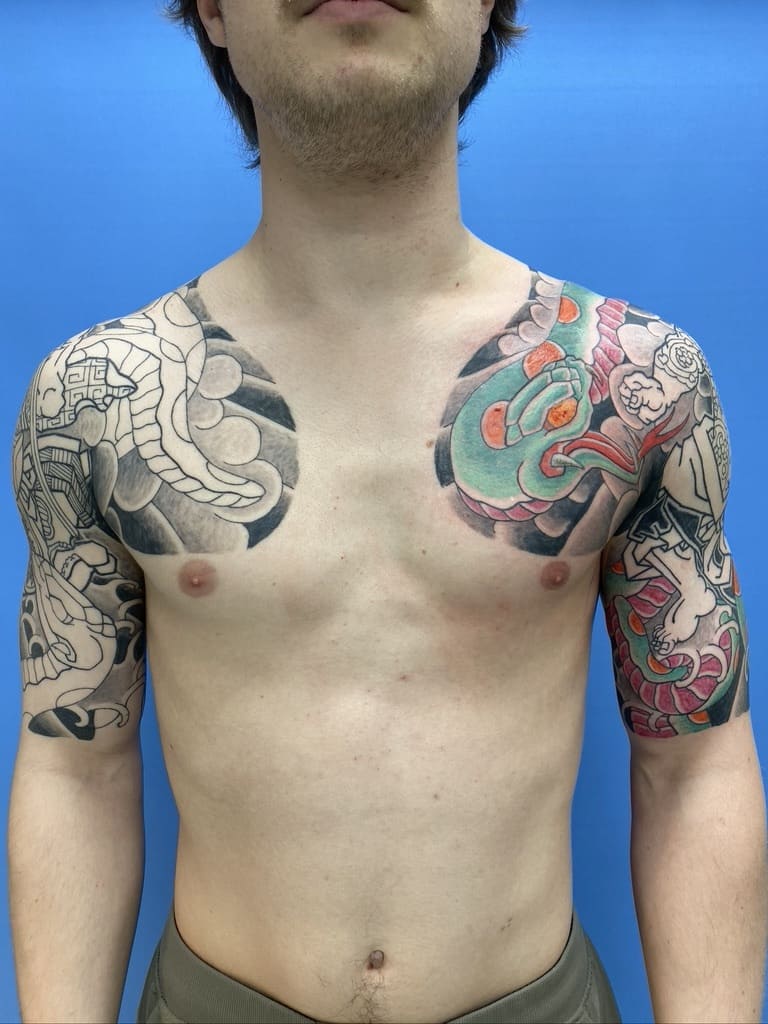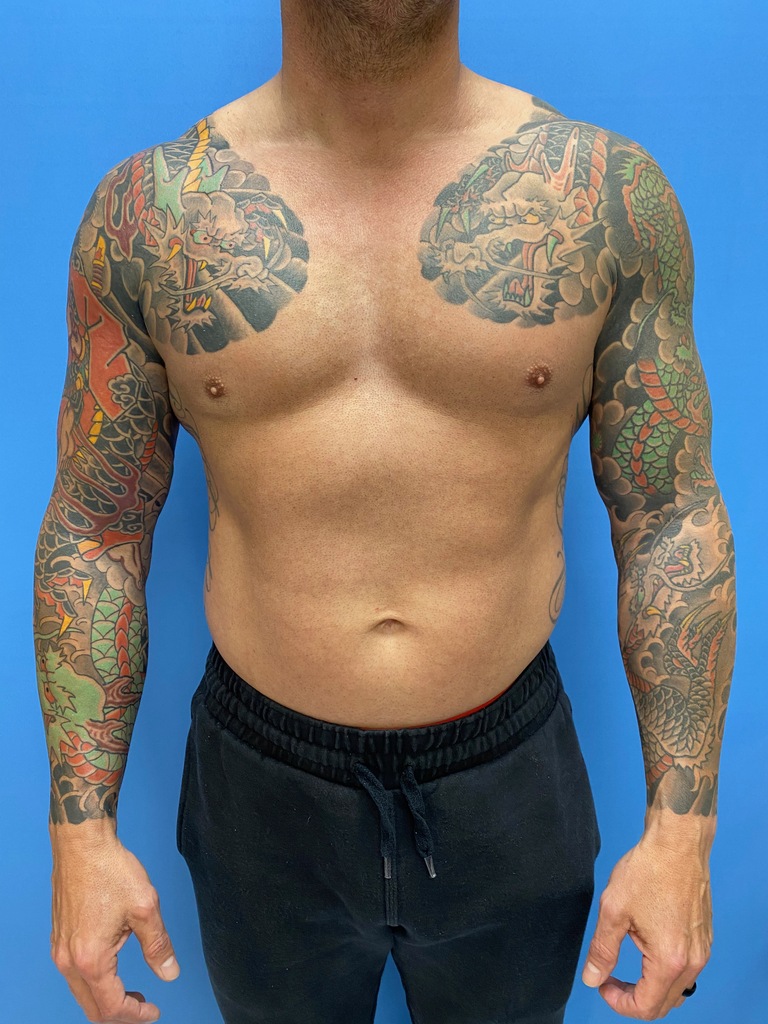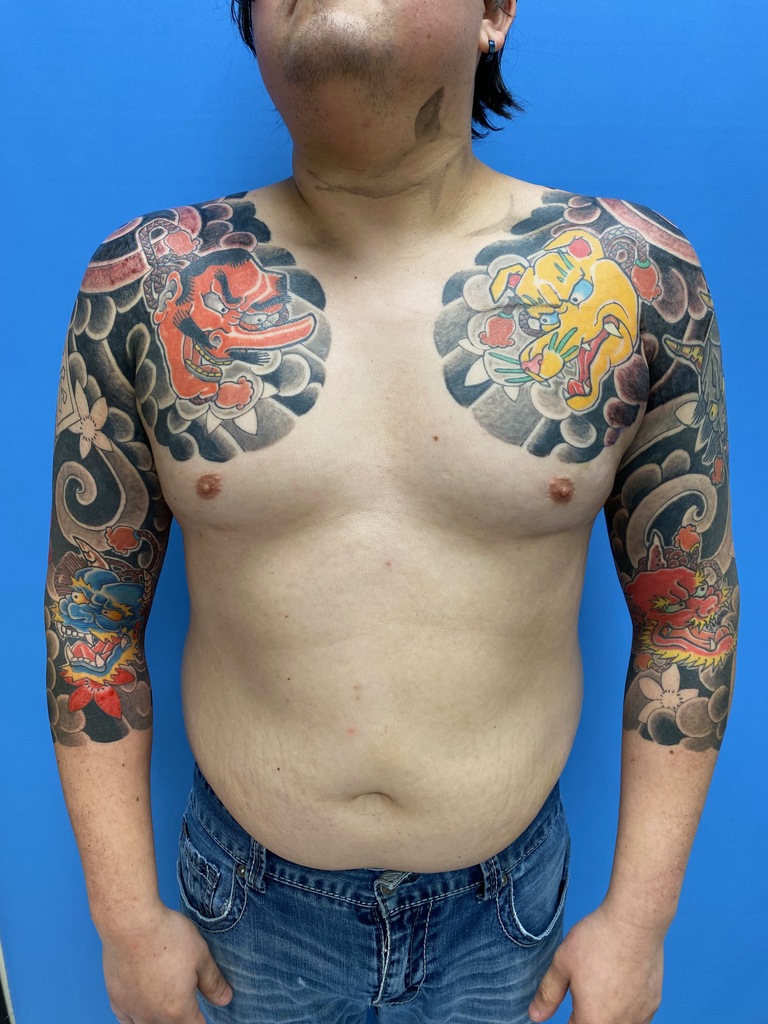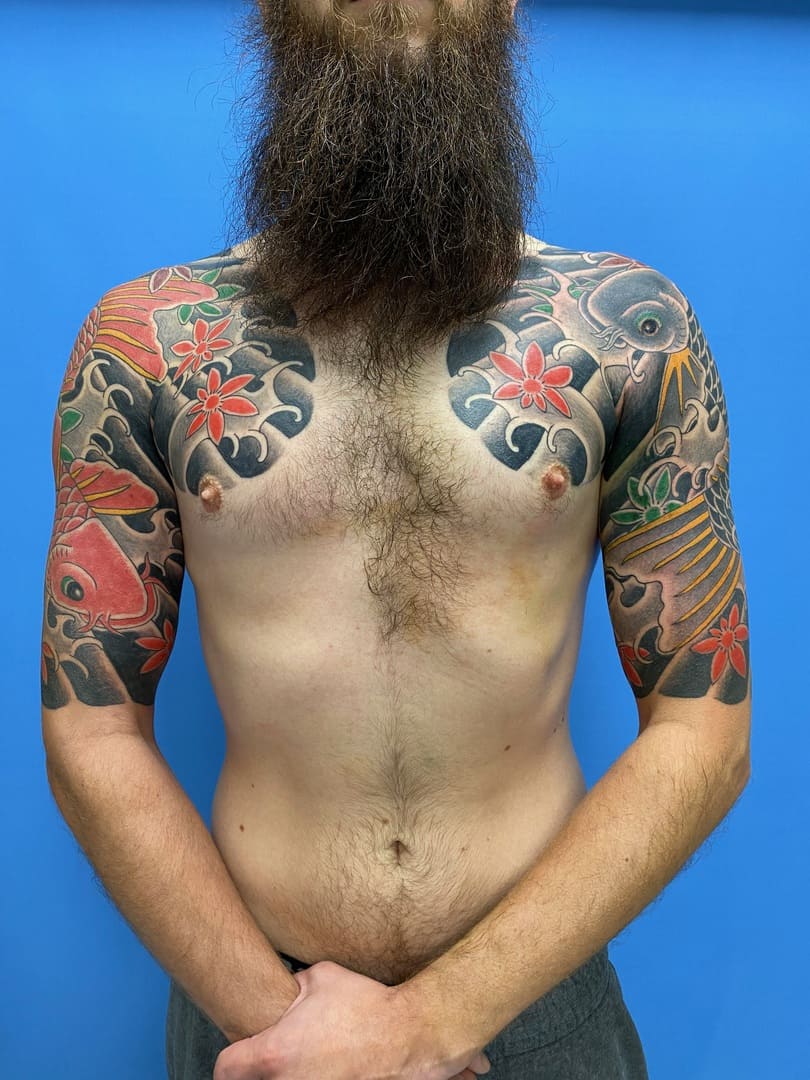raditional Japanese sleeve tattoos make up a large part of the oldest pictorial form of tattooing in the world, which is the Japanese tattoo. This was the tradition that established the Japanese arm sleeve tattoo, in which a portion of the arm is completely covered with tattooing. The sheer amount of tattooing contained in a sleeve is over the top and goes all in, full force and full throttle, and these aspects of the Japanese arm sleeve tattoo draw us, as American tattoo collectors, to it. Correctly applied, we use it in its traditional form, preserving its power, but for our own purposes, advancing our American concerns, hopes, and statements of intent as we do so.
Japanese Arm Sleeve Tattoos
Traditional Japanese Tattoos
Traditional Japanese Sleeve Tattoo
What Makes a Traditional Japanese Sleeve Tattoo?
Traditional Japanese sleeve tattoos are designed with careful attention to the flow and composition of the overall artwork. The tattoo artist considers the natural contours of the body to create a harmonious and balanced design.
Japanese sleeve tattoos are meant to be applied in pairs, to the right and left sides of the body in tandem. They totally cover a specific portion of the arms, and come in three possible lengths: the Japanese half sleeve tattoo, the three quarter sleeve, and the Japanese full sleeve tattoo. Like Japan itself, these tattoos have strong borders and a definite beginning and end, and everything in between is tattooed completely.
The Japanese arm sleeve tattoo can be applied to one arm at a time. However, the tradition of Japanese tattooing is to see, organize, and tattoo the body as one whole made up out of pairs. Tattooed sleeves have a great effect when tattooed in this way, and the whole gains far greater than the sum of the two sides when this strategy is employed.
Traditional Japanese sleeve tattoos work together to create a dynamic relationship between the arms. The same motif will be used on each arm, but treated in such a way as to create a sort of tension that serves to set the tattoos in motion. Classic motifs for Japanese sleeves include animals such as dragons, koi, and tigers that represent power and strength, the natural beauty of the Japanese flower such as the cherry blossom that symbolizes the human condition, and folk warriors and heroes who carry the ultimate meaning of both the American as well as the Japanese tattoo, which is power.
These animals, flowers, and heroes are set against a background of an elemental world comprised of wind, wave, and cloud, again representing the ultimate power of nature. Each part of the Japanese tattoo design works in accord with the other, ever increasing in power, creating great cohesion and layers of meaning.
Japanese Arm Sleeve Tattoo Lengths
To correctly use the Japanese invention of the tattoo sleeve for our purposes of American tattooing, each of its traditions should be preserved. By respecting these traditions, we strengthen our own. We also achieve correct tattooing. Let’s examine these precise formats for the creation of a sleeve:

Japanese Half Sleeve Tattoo
The Japanese half sleeve tattoo will end just above the elbow. This sleeve length is the most common, both in old Japan and in present day America, for its versatility as it is both easy to conceal as well as to show off. Note that the quarter sleeve is not an option. However, a half sleeve may be choked up on the arm a few inches, to provide for extra conservatism when modesty is a requirement.

Japanese Full Sleeve Arm Tattoo
The full sleeve tattoo will begin at the wrist. It should be a bit raised to allow for wrist movement and concealment under a shirt sleeve. Rarely on display in Japan, the full sleeve tattoo is the ultimate American tattoo sleeve length, as it is bold and assertive. One drawback to the full sleeve length is actually too much space- this may not be the preferred sleeve length for some designs.

Three Quarter Sleeve Tattoo
The three quarter sleeve will begin just above the middle of the forearm, perhaps the ultimate sleeve length. It fits most japanese tattoo imagery perfectly. Easily concealed with shirt sleeves. The drawback is the open skin at the lower forearm. The American tattoo collector is likely to decide to add more tattooing there at a later date, which may put the original sleeve slightly off kilter.
Ready For an Authentic Japanese Arm Sleeve Tattoo? Schedule A Consultation Today
Achieve your traditional Japanese sleeve tattoos with American tattoo master Carl Hallowell, a renowned tattoo artist serving Dallas, Fort Worth, and East Texas from his private studio locations.
Whether you envision a set of Japanese full sleeve tattoos, three quarter sleeve tattoos, or Japanese half sleeve tattoos, choose American craftsman Carl Hallowell for yours. Carl’s expertise is dedicated solely to preserving the traditional forms of tattooing. You’ve heard it said that “they don’t make ‘em like they used to”. Well maybe they do. Channeling the strength of the Japanese tradition through the fist of American independence. Traditional Japanese tattoo. Traditional American values. That’s Carl Hallowell tattoo.
Begin your journey to tattoo and contact Carl Hallowell to discuss your ideas for your sleeves. Carl turns your personal vision into your unique tattoo by connecting with you and translating your person into a set of traditional Japanese tattoo motifs that will reveal a man’s American power, or a woman’s American beauty.
Your work is out of this world. Keep up the great talent. Your one hell of a tattooer.
Wendy
Real tattoos for real people…keepin’ the real texas tradition alive bud
Tex
first off carl is my buddy he does bad ass traditional tattoos he did a killer stray cats logo on my forearm in solid black he also did the state of texas that says dime for dimebag Darryl of pantera he also did a bitchin rockabilly chick with a deck of cards and a bottle of booze with some cherries it says rocker's dream I just went up to him and said I want a rockabilly chick and the genius he is came up with that carl is a very kind cool dude.
Ryan Mason
Carl is a great tattoo artist. Great with clients and makes sure everyone walks out with a killer piece that they will love forever. Very patient and kind, and it shows in his work and with repeat customers. Keep up the good work Carl!!!
Robbie
I'm not sure what type of witchcraft/wizardry you did on me, but this tattoo is almost completely healed, and it hasn't even been a week yet! What the?!? Haha, awesome. Thanks again for a KILLER tattoo and arguably the best tattoo experience I've had thus far.
Nick Sacy
Love your site, very informative and helpful! I might need another?!?!?!?
Mom
Great stuff here man! Love it!
Jojo Ackermann
It’s amazing after all these years how you’ve stayed true to the art. The way you continue grow but still hold on to the raw power of what we hold dear. In a time when tattooing is going in a diluted direction and seems to have lost it’s magic, there you are to push the brakes. To give soul back to the sacred. Anyone that knows you knows that you are an asset to tattooing. I am honored to call you my friend. May you find enlightenment in this thing we call tattoo and finally capture the perfect panther!!!!
Derek Jefferson
I've been getting tattoos by Carl for almost 20 years now, including two half sleeves, a back piece, and various other sundry pieces, and I've never gone to anyone else. Carl is a genuinely personable guy that gets along with everyone, and is a consummate professional that takes his craft very seriously. He is always prepared to give you a unique, personalized tattoo that you'll be proud to wear the rest of your life, no matter what the style.
Cory Wells
I've been getting tattooed by carl for the better part of 2 decades. He always makes sure that we don't miss out on any painful spots. He's a great guy like that! I have trusted Carl with both sleeves and now my back. His light handed approach makes it easy to sit with him for hours.


























